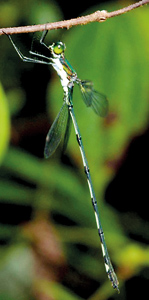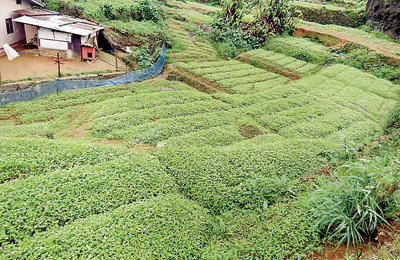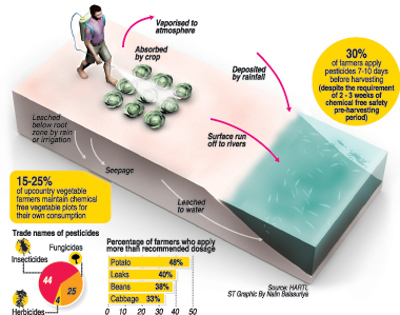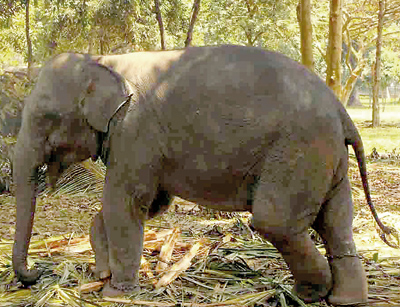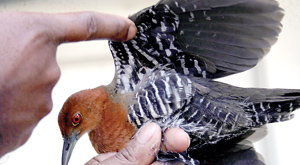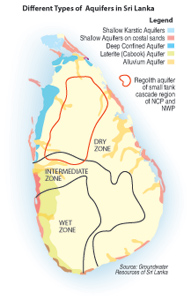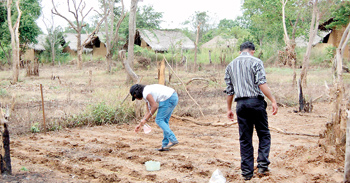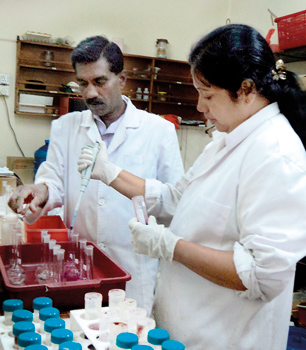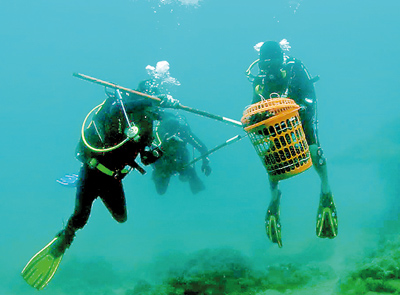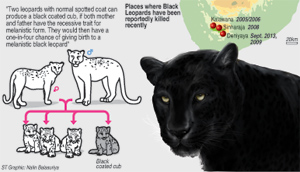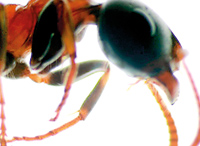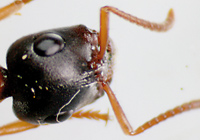“This is what we call ‘Donkey doing dog’s job’… Both dog’s inaction and donkey’s action is questionable - Roshan Wevita“
Since the news spread that Yala’s tusker Gemunu is shot; lots of concerned wildlife enthusiasts have been commented on the issue through Social Media Channels. “Sri Lankan Wildlife” Facebook group has been a center of discussion, but these comments will soon be buried among other latest posts. So thought of archiving some of the interesting posts on my blog. But please note that these are my personal selection extracted around 11.00 pm on 20th.Aug (done in a bit of hurry), so I could be missing some other interesting messages… Please be free to “Leave a comment” on this blog post, so your thoughts too will be heard…!!
Mentioned above is the best comment illustrating on what happened in Yala. Pls note that those comments marked with a ‘*’ contains more text, but shortened for giving more prominence for the main message.
Roshan Wevita This is what we call ‘Donkey doing dog’s job’… Both dog’s inaction and donkey’s action are questionable *
Chandima Gunadasa Poor Gamunu.. this must be the most terrifying moment in his life. They say elephants never forget … I only hope he does !!!
Madhubhashini Jayawardena So it was Gamunu who paid the price! not the people. So Sad!!
Namal Kamalgoda This was inevitable
Hamid R Haniffa Everyone knew that this was coming, but from the Army? Hell no! *
Dilshad Jemzeed Can someone tel us the purpose of having an Army camp inside Yala after May 2009?
Chullante’ Jayasuriya Exactly! What is the reason for the Army’s presence in the park????
Chandini Rajaratnam to kill or not to kill is not the point. they cannot shoot inside the park
Naren Gunasekera The Army’s presence in the park is the same as why they have expanded their bases elsewhere, why the navy holds land in the east, why they build resorts in Yala and Trinco. It is a land grab, pure and simple by the powers that be.
Manori Gunawardena Crux of the matter is tourism industry it’s regulatory agencies and wildlife authorities have to Reign in the mess they have created. That shot was fired because sometime in the past some one after a quick buck fed an elephant.
Kulendra Janaka Here’s the punchline though; according to the minister “U harima ahinsaka aliyek” (It is a very harmless/gentle elephant). *
Kusum Kumar Fernando This is wonder of Asia! !!!!!!!
Hamid R Haniffa This is not Gamunu fault. But the fault of the DWC
Caryll Tozer And now, we have a scared but annoyed Gemunu, an even more dangerous situation
Chandini Rajaratnam elephants never forget
Elephant-rahula GunaseKera We need to use the opportunity to get people to listen, and take positive action.
Pravin Mendis There are only a very few trackers who can handle a situation like this now….most are so and so’s henchmen…
Elephant-rahula GunaseKera In Arizona they have special forces trackers on the border inside national parks, but they all are also wildlife officers. So if Sri Lanka wants to.keep.army personel inside parks at least request that they go through some type of training as to how to interact with wildlife.
Elephant-rahula GunaseKera This the.problem in Sri Lanka due to fear or pride no one learns from mistakes *
Manori Gunawardena Interesting take…..ultimately who should be held accountable for the “Gemunu incident”? Merely passing the buck to the Department of Wildlife is insufficient. This has to be tackled at Economic Development level vis a vis the Tourism Industry and its regulators.
In my experience the past couple of years the industry has been less than forthcoming in engaging in sustainable solutions to manage a visitor issue which at the end of the day benefits their industry, printing a few posters and leaflets as CSR and other token gestures will only serve to gloss over the underlying issue, that yala is over visited and there are too many rooms servicing the park with more under way.
This is all about being OPPORTUNISTIC! We as nature lovers waited for the right moment to get the permanent campers out from Yala and this is right time to get the army camp out from Yala. Lets everyone strive together in achieving this goal….
Naren Gunasekera What about the irresponsible jeep drivers?
Kpl Perera Shooting to air just to fear the animal is not a crime!! If any unfortunate thing happened if Gemunu was not chased away, what would have been your comments?
Manori Gunawardena The sign at the entrance to the National Park says enter at your OWN RISK……
Imran Jabeer So what do you suppose “Rambo” here would have done if Gemunu turned and charged him instead of fleeing in horror; I’m sure he would’ve unloaded his magazine on him
Manori Gunawardena Share widely people, this mayhem in the parks has to stop the tourism industry that touts wildlife tourism created this mess and the authorities stood idle and let it happen.
Renton de Alwis I agree Manori… we need to better manage the visits by tourists (both foreign and local) to our parks. Yala, Minnariya (The gathering is a shameful free for all of vehicles too) and other …. Too many vehicles intruding on the lives of these treasures. Tourism should make it its business to join in on establishing lines of control for it may mean killing the goose that lays the golden eggs.
Hisham Shums I think the problem here is not tourism but strict enforcement of the park rules and control of the number of jeeps that are in the park at one time. Yes, tourists may have fed Gemunu. The question is, why was it allowed?
The main issue is that safari jeeps are allowed to go into the parks without a guide from the Dept of Wildlife. Even when a guide is present, you don’t see them enforcing the rules because they know that the jeep owners / drivers have a lot of political influence. So what needs to be addressed is:
1. How do we educate, control and monitor the jeep drivers?
2. How do we educate our politicians and make it clear that this nonsense has to stop? When politicians interfere unnecessarily just to ensure they win the next election, things like this are bound to happen.
Blaming tourists and / or tour companies that promote wildlife in Sri Lanka is not going to help the cause.
The tourists need to be made aware of the rules and regulations and the park office has to monitor and ensure that the rules and regulations are followed. This is the bottom line.
Manori Gunawardena Actually tour companies are the first point of contact in educating tourists on park etiquette, but how many for example brief guests on arrival or pre safari on park rules as they do in many reputed tourism facilities internationally.
1. For small facilities like yours Hisham Shums , pick train a few drivers to work with. 2 provide a briefing on park rules to your guests on arrival at your accommodation a pre safari brief .
While authorities have been lethargic enforcing rules the operators and accommodation providers have a huge role to play in how the park is serviced. These types of initiatives can be expedited.
Set a good example….
Manori Gunawardena Hisham Shums your a minority, will inbox some good guys. The primary function of the DWC is conservation now with increased visitation they have to evolve a parallel cardre to serve as guides enforce rules.
DWC does not have a tourism services mandate the economic development authorities have to create one and the resources.
Dyan Amodha Kannangara Imran Jabeer I was thinking the same thing, idiot would have most certainly unloaded the magazine. That f#$#%^&# jeep driver should never have stopped and at least should have driven off when Gemunu picked his vehicle. We Sri Lankans are so short sighted we bite the hand that feeds us.
Hamid R Haniffa This is not Gamunu fault. But the fault of the DWC
If the DWC can adapt similar guidelines as which to what is being followed at world’s end, then there is hope. And the DWC got to take more control of the Parks. And not count on others(ect.. Army, RDA). The up keeping of the park should be done by DWC, with trackers given supreme control once entered in to national parks.
Roshan Wevita This Armed soldier must have been worried about Gemunu putting his trunk inside the jeep.. However he had no business there yet; More than him the tracker should have been concerned about the safety of visitors cos it’s his job, not a soldier’s.
This is what we call ‘Donkey doing dog’s job’… Both dog’s inaction and donkey’s action are questionable *
Dilshad Jemzeed This is a golden opportunity to move the army camp out from Yala. As we waited for the right moment and got the permanent campers out, lets persuade the authorities to remove the Army camp from Yala NP……
Peshele Randeni What we should look at is to impose the existing laws and not introduce more.
Kpl Perera DWLC should impose new rules & regulations or laws banning entry of private vehicles to National Parks. DWLC should provide transport facilities by their own mode of transport or contracted services. Specialy designed buses could be utilised for this. By this scheme you can minimise no of vehicles entering parks & also visitors can enjoy safe, convenient, comfortable experience in a National Park.
Ajith Gamage At the end….this elephant “Gemunu” will be blamed. Wildlife Dept. officials who accompany the vehicles must take the responsibility and should not allow the drivers to stop the vehicle near the elephant. This situation has created by the people. Wildlife officials and the DRIVERS OF THE SAFARI VEHICLES must act in a more responsible manner to avoid such incidents and more importantly to protect this animal.
Compiled at midnight, 20th.Aug.2013




